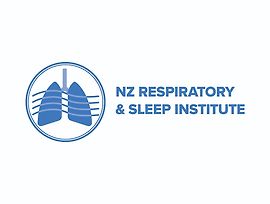Central Auckland, East Auckland, North Auckland, South Auckland, West Auckland > Private Hospitals & Specialists >
NZ Respiratory & Sleep Institute
Private Service, Respiratory, Paediatrics
Today
8:30 AM to 8:00 PM.
Description
NZ Respiratory & Sleep Institute
NZRSI provides lung function and sleep laboratory testing. We also have a group of 13 Respiratory & Sleep Specialists along with two Sleep & Respiratory Paediatricians who provide consulting services. We are centrally located with parking on-site. We provide the country's best and most comprehensive private respiratory and sleep service.
Respiratory & Sleep Specialists are able to provide clinical consultation for patients with respiratory disease and sleep disorders, including snoring. Urgent consultation (same day) is available, by arrangement, for patients with cancer or abnormal radiology.
The specialists also undertake timely consultation and investigations to meet immigration and occupational requirements. There is particular expertise in occupational lung disease, diving and aviation (altitude) medicine.
Sleep & Breathing (NZ) Ltd is able to undertake a full range of diagnostic lung function testing, from simple spirometry to more detailed pulmonary physiology testing. We also now provide TB induced sputum testing.
We provide the best range of sleep testing in Australasia; in-lab polysomnography and MSLT/MWT, home based sleep apnoea assessments; prolonged infraRed video monitoring and actigraphy.
Sleep & Breathing (NZ) Ltd provides a full range of equipment for people with sleep or lung disorders needing treatment with nasal CPAP and oral devices. We provide a full range of light therapy (White lightboxes and Green lightboxes) devices for the management of seasonal affective disorder (SAD) and circadian disorders.
We also have two Respiratory Physiotherapists, Sarah Mooney and Trina Robertson. Sarah Mooney has worked extensively in her chosen field and has an interest in the management of bronchiectasis and breathing pattern disorders. More recently, she has undertaken research in different aspects of both respiratory conditions. Trina Robertson sees people with a wide variety of respiratory presentations, including COPD, bronchiectasis, interstitial lung disease and disordered breathing. Both Sarah and Trina work with children, youth and adults with lung conditions and/or breathing disorders.
Our Dietitian, Amy Liu, specialises in weight management, diabetes (type 1 and type 2), high cholesterol, managing acute kidney failure, polycystic ovarian syndrome, eating disorders, sports nutrition, pregnancy and lactation, gastrointestinal disorders, allergies and elimination diet.
Sleep & Breathing (NZ) Ltd has a Clinical Research Division which is actively involved in drug and equipment research.
What is Respiratory Medicine?
Respiratory medicine is the branch of medicine that investigates and treats people with diseases affecting the lungs, breathing tubes, chest wall and breathing.
Common symptoms or signs of lung disease include: shortness of breath, wheezing, cough, coughing up blood or sputum (phlegm), and having chest pains.
The lungs deliver oxygen into our bloodstream and remove carbon dioxide. When you breathe in, air passes through the throat into the windpipe (trachea). The base of the windpipe divides into the right and left tubes (bronchi) which divide again and again each time getting smaller and smaller like the branches of a tree, until the smallest airways deliver the air to the alveoli. The alveoli are the spongy spaces where oxygen and carbon dioxide are exchanged. They act like balloons i.e. when you breathe in they inflate and when you breathe out they relax.
Oxygen moves across the walls of the alveoli and enters the bloodstream and is carried to the rest of the body after passing through the heart. Carbon dioxide is passed from the blood into the alveoli and is breathed out of the lungs.
What is Sleep Medicine?
Sleep medicine is the specialty which investigates and manages disorders where there is difficulty in getting off to sleep or staying awake in the night (insomnias), difficulty with feeling tired or sleepy in the day (sleep apnoea, narcolepsy, restless leg syndrome, snoring etc), and with the movement disorders of sleep (parasomnias such as sleep walking and talking, REM behaviour disorder, nocturnal epilepsies).
We provide the best range of sleep testing in Australasia; in-lab polysomnography and MSLT/MWT, home based sleep apnoea assessments; prolonged infraRed video monitoring and actigraphy.
A range of treatments are coordinated for the management of snoring and sleep apnoea by the Institute, including pressure treatment with nasal CPAP, dental devices and upper airway surgery. Light boxes of various types correct seasonal affective disorder (SAD) and circadian problems with sleep timing. We have access to a range of medication and experts in the non drug treatment of insomnia.
Staff
- Sarah Mooney (Respiratory Physiotherapist)
- Trina Robertson (Respiratiory Physiotherapist)
- Amy Liu (Dietician)
Consultants
Note: Please note below that some people are not available at all locations.
-

Dr Sonia Cherian
Sleep Specialist
Available at Ascot Office Park, 93-95 Ascot Avenue, Greenlane, Auckland
-
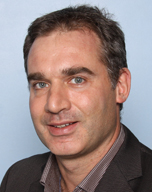
Dr Paul Dawkins
Respiratory and Sleep Physician
Available at Ascot Office Park, 93-95 Ascot Avenue, Greenlane, Auckland, 2B Glasgow Road, Pukekohe, Auckland
-

Associate Professor Jeff Garrett
Respiratory Physician
Available at Ascot Office Park, 93-95 Ascot Avenue, Greenlane, Auckland
-
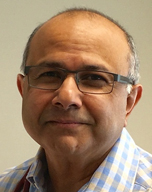
Dr Syed Hussain
Respiratory & Sleep Physician
Available at Ascot Office Park, 93-95 Ascot Avenue, Greenlane, Auckland
-
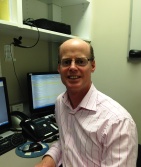
Dr Stuart Jones
Respiratory and Sleep Physician
Available at Ascot Office Park, 93-95 Ascot Avenue, Greenlane, Auckland
-

Dr Chris Lewis
Respiratory Physician
Available at Ascot Office Park, 93-95 Ascot Avenue, Greenlane, Auckland
-

Dr Robert Lewis
Respiratory and Sleep Physician
Available at Ascot Office Park, 93-95 Ascot Avenue, Greenlane, Auckland
-

Dr Tanya McWilliams
Respiratory Physician
Available at Ascot Office Park, 93-95 Ascot Avenue, Greenlane, Auckland
-
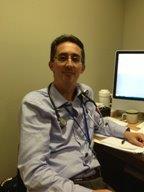
Dr Mark O'Carroll
Respiratory Physician
Available at Ascot Office Park, 93-95 Ascot Avenue, Greenlane, Auckland
-

Dr Conor O'Dochartaigh
Respiratory and Sleep Physician
Available at Ascot Office Park, 93-95 Ascot Avenue, Greenlane, Auckland
-

Dr Elizabeth Edwards
Paediatric Specialist
Available at Ascot Office Park, 93-95 Ascot Avenue, Greenlane, Auckland
-

Dr Sasiharan Sithamparanathan
Sleep and Respiratory Physician
Available at Ascot Office Park, 93-95 Ascot Avenue, Greenlane, Auckland
-

Dr Cameron Sullivan
Respiratory Physician
Available at Ascot Office Park, 93-95 Ascot Avenue, Greenlane, Auckland
-

Dr Jacob Twiss
Paediatric Specialist
Available at Ascot Office Park, 93-95 Ascot Avenue, Greenlane, Auckland
-
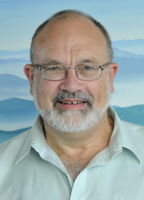
Dr Andrew G Veale
Respiratory & Sleep Specialist
Not available on location.
Referral Expectations
You need to bring to your appointment:
1. Any letters or reports from your doctor or another hospital
2. Any X-rays, CT (computer tomography) or MRI (magnetic resonance imaging) films and reports. It is best to ask your radiologist to give you a disk with all your X-rays and scans on it. We can load this into our computers for long term storage
3. A list of all medicines you are currently taking, including herbal and natural remedies.
If you have any change in your condition before you come to your appointment, please see your GP immediately.
Sleep & Breathing (NZ) Ltd is a Southern Cross Affiliated Provider, with agreed charges for lung function and sleep investigations.
When we see you, we may ask whether you wish to be included on a research database which would allow us to contact you for research studies in the future. You are not obliged to consent for inclusion in the database and this would not affect your treatment in any way. Inclusion in the database would allow us to contact you about a study in the future which you may wish to take part in, but consent for each study would be sought separately.
Fees and Charges Description
| Consultation fee | $415-$500 |
| Follow-up consultation fee | $200-$300 |
| Lung function testing | $140- $1122 (may require more than one test) |
| Sleep studies | $230 - $3314 (depending on tests requested) |
Hours
8:30 AM to 8:00 PM.
| Mon | 8:30 AM – 5:00 PM |
|---|---|
| Tue – Thu | 8:30 AM – 8:00 PM |
| Fri | 8:30 AM – 5:00 PM |
Overnight sleep studies performed on Wednesday & Thursday evenings, and occasionally on Tuesday evenings. Reception will be open until 8.00pm on these evenings.
Public Holidays: Closed ANZAC Day (25 Apr), King's Birthday (3 Jun), Matariki (28 Jun), Labour Day (28 Oct), Auckland Anniversary (27 Jan), Waitangi Day (6 Feb), Good Friday (18 Apr), Easter Sunday (20 Apr), Easter Monday (21 Apr).
Common Conditions / Procedures / Treatments
Asthma symptoms include coughing, wheezing, a tight feeling in the chest and trouble breathing. Asthma occurs when the main breathing tubes of your lungs are over-sensitive and react to things that don’t affect other people. As a result of this they become swollen and narrow. If your asthma is not getting better with standard treatment (preventer and reliever inhalers) or if you are having more asthma attacks than you or your doctor are comfortable with, you may be referred to a specialist. In most cases you’ll be asked to give a complete medical history and will also be examined by the doctor. Sometimes other conditions can appear like asthma or complicate asthma, so you may be asked to have some tests to help in the diagnosis. Tests looking for severity and complicating features of asthma include: chest X-ray, spirometry and CT chest. For more details see below. You may, however, not need any of these tests. Treatment This includes taking medicines as well as changing some lifestyle factors. A peak flow meter can be used to keep a watch on your asthma and help with plans to prevent attacks. Stopping smoking is very important as is learning to recognise what brings an asthma attack on. Asthma is treated with inhaled medicines. There are two types: 1. a preventer medicine is taken every day. It soothes the irritated breathing tubes and prevents worsening of asthma, “asthma attacks”. 2. a reliever treats the asthma attacks. It relaxes the tightened muscles around the breathing tubes. For more information on asthma see www.asthmanz.co.nz
Asthma symptoms include coughing, wheezing, a tight feeling in the chest and trouble breathing. Asthma occurs when the main breathing tubes of your lungs are over-sensitive and react to things that don’t affect other people. As a result of this they become swollen and narrow. If your asthma is not getting better with standard treatment (preventer and reliever inhalers) or if you are having more asthma attacks than you or your doctor are comfortable with, you may be referred to a specialist. In most cases you’ll be asked to give a complete medical history and will also be examined by the doctor. Sometimes other conditions can appear like asthma or complicate asthma, so you may be asked to have some tests to help in the diagnosis. Tests looking for severity and complicating features of asthma include: chest X-ray, spirometry and CT chest. For more details see below. You may, however, not need any of these tests. Treatment This includes taking medicines as well as changing some lifestyle factors. A peak flow meter can be used to keep a watch on your asthma and help with plans to prevent attacks. Stopping smoking is very important as is learning to recognise what brings an asthma attack on. Asthma is treated with inhaled medicines. There are two types: 1. a preventer medicine is taken every day. It soothes the irritated breathing tubes and prevents worsening of asthma, “asthma attacks”. 2. a reliever treats the asthma attacks. It relaxes the tightened muscles around the breathing tubes. For more information on asthma see www.asthmanz.co.nz
This term is used to describe lung disease where the breathing tubes become blocked and the surrounding tissue and air sacs inside the lungs become damaged. COPD includes conditions such as emphysema, chronic bronchitis and chronic asthma. COPD is a long term and sometimes fatal disease that can be managed and slowed down. Smoking is the main cause of emphysema and chronic bronchitis. Chronic bronchitis is an inflammation of the main breathing tubes (bronchi) in the lungs, which results in the production of excess mucous (phlegm) and a reduction in the amount of airflow in and out of the lungs. In the early stages of chronic bronchitis, a cough usually occurs in the morning. As the disease progresses, coughing persists throughout the day. There is often associated shortness of breath and an increased rate of chest infections. Emphysema is the gradual destruction of the air sacs (alveoli) in the lungs. The alveoli are unable to completely relax. As they become larger they are not as good at transporting oxygen to the blood. Emphysema cannot be cured, but can be managed through medication and lifestyle changes. Investigations You may have some of the following tests before or after your clinic appointment: chest X-ray, spirometry, lung function tests, CT chest. The specialist will decide if you need any of these tests, depending on your symptoms and examination findings. Treatment There are ways to manage COPD. The first and most important is to stop smoking if this applies to you. There are exercises and dietary changes that can help maintain and improve fitness. Medications include inhalers, although they are not used for everyone. If you have COPD it is a good idea to have the flu vaccination every year.
This term is used to describe lung disease where the breathing tubes become blocked and the surrounding tissue and air sacs inside the lungs become damaged. COPD includes conditions such as emphysema, chronic bronchitis and chronic asthma. COPD is a long term and sometimes fatal disease that can be managed and slowed down. Smoking is the main cause of emphysema and chronic bronchitis. Chronic bronchitis is an inflammation of the main breathing tubes (bronchi) in the lungs, which results in the production of excess mucous (phlegm) and a reduction in the amount of airflow in and out of the lungs. In the early stages of chronic bronchitis, a cough usually occurs in the morning. As the disease progresses, coughing persists throughout the day. There is often associated shortness of breath and an increased rate of chest infections. Emphysema is the gradual destruction of the air sacs (alveoli) in the lungs. The alveoli are unable to completely relax. As they become larger they are not as good at transporting oxygen to the blood. Emphysema cannot be cured, but can be managed through medication and lifestyle changes. Investigations You may have some of the following tests before or after your clinic appointment: chest X-ray, spirometry, lung function tests, CT chest. The specialist will decide if you need any of these tests, depending on your symptoms and examination findings. Treatment There are ways to manage COPD. The first and most important is to stop smoking if this applies to you. There are exercises and dietary changes that can help maintain and improve fitness. Medications include inhalers, although they are not used for everyone. If you have COPD it is a good idea to have the flu vaccination every year.
You may have some of the following tests before or after your clinic appointment:
There are ways to manage COPD. The first and most important is to stop smoking if this applies to you. There are exercises and dietary changes that can help maintain and improve fitness. Medications include inhalers, although they are not used for everyone. If you have COPD it is a good idea to have the flu vaccination every year.
This is when abnormal malignant cells divide and grow in an uncontrolled fashion in the lung tissue. The effect of this is to destroy normal lung tissue and block off the breathing tubes. There are several types of lung cancer. The most common cause is cigarette smoke; however exposure to asbestos, marijuana smoke and a number of other chemicals can also increase your risk of developing cancer. Common signs and symptoms · a cough that gets worse with time · coughing up blood · chest pain · loss of appetite and weight · tiredness · repeated doses of, or not improving, bronchitis or pneumonia. Diagnosis To diagnose lung cancer your doctor will look at your medical and smoking history. You will also have a physical examination. This is usually followed by a number of tests. The aim of the tests is to confirm the diagnosis and find out what type of cancer it is which usually involves obtaining some cells to look at under the microscope. Test you are likely to have include: · chest X-ray. This is the first test that may raise the question of a lung cancer. It is usually followed by other tests to confirm the diagnosis · CT scans with or without fine needle aspirate (see below) · bronchoscopy (see below). Treatment Once lung cancer is diagnosed, a process known as staging determines the extent of the disease. Knowing the type and stage of cancer means the doctor can plan your treatment. Different treatment options include: · surgery. The type of surgery depends on the size and type of cancer · radiotherapy is a form of high energy radiation (X-ray) that kills cancer cells · chemotherapy is the use of drugs aimed at killing cancer cells. The aim of treatment is to keep the person as well as possible even if the cancer cannot be cured. If you have a lung cancer there will be ongoing follow up with specialists and nurses throughout treatment and afterwards. For more information about lung cancer see www.cancernz.org.nz
This is when abnormal malignant cells divide and grow in an uncontrolled fashion in the lung tissue. The effect of this is to destroy normal lung tissue and block off the breathing tubes. There are several types of lung cancer. The most common cause is cigarette smoke; however exposure to asbestos, marijuana smoke and a number of other chemicals can also increase your risk of developing cancer. Common signs and symptoms · a cough that gets worse with time · coughing up blood · chest pain · loss of appetite and weight · tiredness · repeated doses of, or not improving, bronchitis or pneumonia. Diagnosis To diagnose lung cancer your doctor will look at your medical and smoking history. You will also have a physical examination. This is usually followed by a number of tests. The aim of the tests is to confirm the diagnosis and find out what type of cancer it is which usually involves obtaining some cells to look at under the microscope. Test you are likely to have include: · chest X-ray. This is the first test that may raise the question of a lung cancer. It is usually followed by other tests to confirm the diagnosis · CT scans with or without fine needle aspirate (see below) · bronchoscopy (see below). Treatment Once lung cancer is diagnosed, a process known as staging determines the extent of the disease. Knowing the type and stage of cancer means the doctor can plan your treatment. Different treatment options include: · surgery. The type of surgery depends on the size and type of cancer · radiotherapy is a form of high energy radiation (X-ray) that kills cancer cells · chemotherapy is the use of drugs aimed at killing cancer cells. The aim of treatment is to keep the person as well as possible even if the cancer cannot be cured. If you have a lung cancer there will be ongoing follow up with specialists and nurses throughout treatment and afterwards. For more information about lung cancer see www.cancernz.org.nz
You may be advised to take lung function tests to find out how much air moves in and out as you breathe. The two most common tools used to measure lung function are spirometers and peak flow meters. Lung function tests are usually done before and after taking a medication known as a bronchodilator (asthma reliever medication) to open your airways.
You may be advised to take lung function tests to find out how much air moves in and out as you breathe. The two most common tools used to measure lung function are spirometers and peak flow meters. Lung function tests are usually done before and after taking a medication known as a bronchodilator (asthma reliever medication) to open your airways.
Spirometry is a test which measures the speed at which your lungs can be filled and emptied of air. It can be used to diagnose problems of breathing and monitor the usefulness of treatment. In order to do spirometry, you take a deep breath in and blow out as hard as you can into a hollow tube attached to a spirometer machine for 6 seconds. You will be asked to do the test 3 times. The whole process takes 10 – 15 minutes depending on whether or not you are given some inhaled medicine and asked to do it again to monitor if there is an improvement.
Spirometry is a test which measures the speed at which your lungs can be filled and emptied of air. It can be used to diagnose problems of breathing and monitor the usefulness of treatment. In order to do spirometry, you take a deep breath in and blow out as hard as you can into a hollow tube attached to a spirometer machine for 6 seconds. You will be asked to do the test 3 times. The whole process takes 10 – 15 minutes depending on whether or not you are given some inhaled medicine and asked to do it again to monitor if there is an improvement.
This is a small hand-held tube that can measure what is happening in your breathing tubes. You can have one at home and measure your peak flow by blowing into it as hard and fast as possible. You will be shown how to measure it and compare it with what you can blow when you are well as part of your asthma management plan if you think you are having an asthma attack.
This is a small hand-held tube that can measure what is happening in your breathing tubes. You can have one at home and measure your peak flow by blowing into it as hard and fast as possible. You will be shown how to measure it and compare it with what you can blow when you are well as part of your asthma management plan if you think you are having an asthma attack.
This is similar to a blood test but instead of a needle going into a vein it is inserted briefly into a small artery in your wrist. A small amount of blood is taken and sent to the laboratory for information about the oxygenation of your blood and other gases. Blood gas measurements may also be used if you have known respiratory, metabolic or kidney disease, especially if you have severe difficulty breathing. Many conditions can cause a blood gas imbalance and while the blood gas tests do not identify the exact cause of the imbalance they will point to either a respiratory or metabolic problem.
This is similar to a blood test but instead of a needle going into a vein it is inserted briefly into a small artery in your wrist. A small amount of blood is taken and sent to the laboratory for information about the oxygenation of your blood and other gases. Blood gas measurements may also be used if you have known respiratory, metabolic or kidney disease, especially if you have severe difficulty breathing. Many conditions can cause a blood gas imbalance and while the blood gas tests do not identify the exact cause of the imbalance they will point to either a respiratory or metabolic problem.
A chest X-ray is normally undertaken to check the chest wall, lungs and heart. A chest X-ray is often the first test used to determine the reason for shortness of breath, persistent cough, chest pain or injury. Although you may think of an X-ray as a picture of bones, a trained observer can also see air spaces, like the lungs (which look black) and fluid (which looks white). Women should always advise their doctor if they are or think they may be pregnant before an X-ray is undertaken. When having a chest X-ray you are exposed to a very small amount of radiation. What to expect? You will have all metal objects removed from your body. You will be asked to remain still in a specific position and hold your breath on command. There are staff present, but they will not necessarily remain in the room, but will speak with you via an intercom system and will be viewing the procedure constantly through a windowed control room.
A chest X-ray is normally undertaken to check the chest wall, lungs and heart. A chest X-ray is often the first test used to determine the reason for shortness of breath, persistent cough, chest pain or injury. Although you may think of an X-ray as a picture of bones, a trained observer can also see air spaces, like the lungs (which look black) and fluid (which looks white). Women should always advise their doctor if they are or think they may be pregnant before an X-ray is undertaken. When having a chest X-ray you are exposed to a very small amount of radiation. What to expect? You will have all metal objects removed from your body. You will be asked to remain still in a specific position and hold your breath on command. There are staff present, but they will not necessarily remain in the room, but will speak with you via an intercom system and will be viewing the procedure constantly through a windowed control room.
With CT you can see much more detail than with a normal X-ray. Using an X-ray beam, which is sent through the body from different angles, creates a CT image and by using a complicated mathematical process a computer is able to produce an image. This allows cross-sectional images of the body without cutting it open. The CT is used to view all body structures but especially soft tissue such as body organs (heart, lungs, liver etc.). What to expect? You will have all metal objects removed from your body. You will lie down on a narrow padded moveable table that will be slid into the scanner, through a circular opening. You will feel nothing while the scan is in progress, but some people can feel slightly claustrophobic or closed in, whilst inside the scanner. You will be asked to remain still and hold your breath on command. There are staff present, but they will not necessarily remain in the room, but will speak with you via an intercom system and will be viewing the procedure constantly through a windowed control room, from where they will run the scanner. Some procedures will require Contrast medium. Contrast medium is a substance that makes the image of the CT clearer. Contrast medium can be given by mouth, or by injection into the bloodstream. The scan time will vary depending on the type of examination required, but as a rule it will take around 30 minutes.
With CT you can see much more detail than with a normal X-ray. Using an X-ray beam, which is sent through the body from different angles, creates a CT image and by using a complicated mathematical process a computer is able to produce an image. This allows cross-sectional images of the body without cutting it open. The CT is used to view all body structures but especially soft tissue such as body organs (heart, lungs, liver etc.). What to expect? You will have all metal objects removed from your body. You will lie down on a narrow padded moveable table that will be slid into the scanner, through a circular opening. You will feel nothing while the scan is in progress, but some people can feel slightly claustrophobic or closed in, whilst inside the scanner. You will be asked to remain still and hold your breath on command. There are staff present, but they will not necessarily remain in the room, but will speak with you via an intercom system and will be viewing the procedure constantly through a windowed control room, from where they will run the scanner. Some procedures will require Contrast medium. Contrast medium is a substance that makes the image of the CT clearer. Contrast medium can be given by mouth, or by injection into the bloodstream. The scan time will vary depending on the type of examination required, but as a rule it will take around 30 minutes.
Depending on what is seen on the CT scan an additional test can be done where a fine needle is inserted into your chest into the cancer and some cells sucked up into the needle. This is done while taking pictures with the CT scanner to guide the doctor as to where to place the needle. Local anesthetic is put into your skin and muscles so that the test is not overly painful. A specialist doctor does this.
Depending on what is seen on the CT scan an additional test can be done where a fine needle is inserted into your chest into the cancer and some cells sucked up into the needle. This is done while taking pictures with the CT scanner to guide the doctor as to where to place the needle. Local anesthetic is put into your skin and muscles so that the test is not overly painful. A specialist doctor does this.
During this test a thin fibreoptic tube is inserted into your breathing tubes, through the nose, to view the tubes and take a biopsy (remove cells or tissue) to see if there are cancer cells present. It is usually undertaken under local anesthetic. You may be given medicine to make you sleepy and relaxed. A specialist doctor does this procedure in an operating theatre environment.
During this test a thin fibreoptic tube is inserted into your breathing tubes, through the nose, to view the tubes and take a biopsy (remove cells or tissue) to see if there are cancer cells present. It is usually undertaken under local anesthetic. You may be given medicine to make you sleepy and relaxed. A specialist doctor does this procedure in an operating theatre environment.
Document Downloads
-
Sleep Laboratory Information Pack
(DOC, 1.6 MB)
Information regarding different sleep studies available at the NZ Respiratory & Sleep Institute.
Refreshments
Resus Cafe is located at the Ascot Hospital, a 5 minute walk from the Institute.
Travel Directions
We are in Ascot Ave, off Greenlane East Road, next to the Novotel Hotel near Ascot Hospital.
Take the Greenlane exit off the Southern motorway then:
- if coming from the South, be in the right lane of the off-ramp, go around the Greenlane roundabout to the right, towards the Ascot Hospital onto Greenlane East Road. Stay in the right lane on Greenlane East Road.
- if coming from the North, be in the left lane of the off-ramp, turn left at the Greenlane roundabout, toward Ascot Hospital. Try and get into the right lane on Greenlane East Road.
At the first set of lights, turn right into Ellerslie Racecourse Drive. Turn right at the roundabout into Ascot Avenue. Follow the road until you come to the next small roundabout, go straight ahead and into the driveway of the Ascot Office Park. Turn left and this will take you to the underground carpark.
Public Transport
We are a short walk from the Greenlane Train Station under the motorway tunnel (2 minutes).
Parking
We have parking available on site in our basement carpark.
Turn left as you come into the driveway of Ascot Office Park (past Dermatology Clinic) and follow the road around and down to the basement carpark.
Turn right at the crossroad in the centre (EXIT sign at top), then turn left. Directly opposite lifts A & B are parks labelled NZ Respiratory & Sleep Institute. Take the lift up to the 3rd floor.
If our carpark is full, there is parking at either Ascot Hospital or in the Ellerslie Racecourse. There would however be a fee payable for parking in either of these locations.
Accommodation
Greenlane Motor Inn (a short walk from the Institute). Telephone: 0800 767 077
Pharmacy
Ascot Pharmacy - 90 Greenlane East, Ellerslie. Telephone: (09) 520 9579.
Security
If arriving after 6.00pm, you will need to use our intercom (located on the right hand side of the driveway, just prior to descending down the slope into our basement carpark). The Receptionist will then release the gate so that you can park in our secure parking.
Website
Contact Details
Ascot Office Park, 93-95 Ascot Avenue, Greenlane, Auckland
Central Auckland
8:30 AM to 8:00 PM.
-
Phone
(09) 638 5255 or Free phone: 0800 895 120
-
Fax
(09) 638 6022
Healthlink EDI
auckphys
Email
Website
CPAP Sales: 0800 895 122
Level 3, Building B
93-95 Ascot Avenue
Greenlane East
Auckland 1051
Street Address
Level 3, Building B
93-95 Ascot Avenue
Greenlane East
Auckland 1051
Postal Address
PO Box 109-409
Newmarket
Auckland 1149
NEW ZEALAND
326 Sunset Road, Mairangi Bay, Auckland
North Auckland
8:30 AM to 8:00 PM.
-
Phone
(09) 638 5255 or Free phone: 0800 895 120
-
Fax
(09) 638 6022
Healthlink EDI
auckphys
Email
Website
2B Glasgow Road, Pukekohe, Auckland
South Auckland
8:30 AM to 8:00 PM.
-
Phone
(09) 638 5255 or Free phone: 0800 895 120
-
Fax
(09) 638 6022
Healthlink EDI
auckphys
Email
Website
Was this page helpful?
This page was last updated at 10:46AM on March 18, 2024. This information is reviewed and edited by NZ Respiratory & Sleep Institute.

